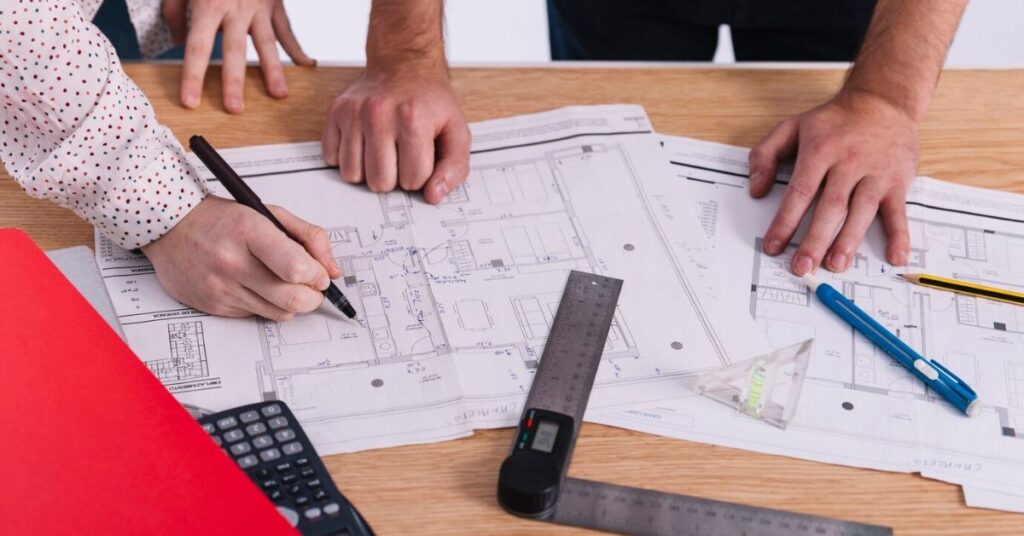When preparing for construction approval, it’s essential to ensure that your drawings meet the required standards. Have you ever wondered how precise and organised your drawings need to be before submission? How can you guarantee that your drawings meet the approval criteria? Let’s explore the steps you need to follow to prepare them for approval.
A technical drawing serves as a fundamental document for any construction project. Whether it’s a building, road, or infrastructure project, these drawings must be accurate, clear, and to scale. A poorly prepared drawing can lead to delays, misunderstandings, and even legal issues. Therefore, understanding the requirements for approval is vital.
Understand the Required Specifications
Before initiating the drawing process, it’s necessary to gain knowledge about the specific requirements for approval. Each region or council may have different regulations, and your plans must adhere to these guidelines. These may include the scale of the drawing, the materials to be used, and any environmental or safety regulations. Familiarising yourself with these requirements early on helps avoid errors that could lead to rejection or delays.
Typically, you will need to ensure that the dimensions, material specifications, and building codes are correct. If any part of the drawing doesn’t meet local laws, it could be rejected or require major revisions. Ensure that all annotations, symbols, and measurements are clear and standardised, reducing the likelihood of misinterpretation.
Include Essential Details
Your drawing should contain all the necessary details for accurate execution. This includes floor plans, elevations, sections, and construction details. It’s crucial to show the exact layout, dimensions, and placements of all elements in the building or structure. Labels should be clear, and the materials should be identified with appropriate symbols or notes.
In addition to standard drawings, include any additional details, such as electrical, plumbing, or HVAC layouts if applicable. These should be integrated seamlessly into the main plans. Including all these details ensures that the construction team has everything needed to proceed without confusion.
Ensure Accuracy and Precision
The accuracy and precision of your plans are paramount. Any mistake in measurements or scale can lead to costly errors during building. Ensure all dimensions are checked thoroughly before submitting the plans for approval. This includes checking the height, width, and depth of every element, as well as confirming that everything is to scale.
Using the right tools for drawing is equally important. Whether you are creating the plans manually or using CAD software, ensure that all lines are straight, clear, and accurately placed. Avoid any unnecessary markings or elements that may distract from the main details. Employing high-quality large format printers at this stage can significantly enhance precision by producing clear, scalable draft prints, enabling stakeholders to conduct thorough reviews and make necessary adjustments before the final submission.
Present the Drawings Clearly
Your drawings should be presented in a clean, easy-to-read format. This means using a legible font for annotations and ensuring that the lines are of appropriate thickness. Avoid overloading the plans with excessive information. Instead, focus on presenting the essential elements in a clear and organised manner.
If you’re submitting physical drawings, make sure they are well-printed and free from smudges or stains. If submitting digitally, ensure the file format is compatible with the approval system used by the authorities. Both clarity and professionalism in presentation can significantly increase the chances of approval.
Double-Check for Compliance with Standards
One of the final steps in preparing your plans for approval is to double-check that all standards are met. This includes reviewing the local building codes, zoning laws, and other relevant regulations. Compliance with these standards is not only essential for approval but also ensures that the project is safe, sustainable, and in line with legal requirements.
Consulting with a structural engineer or architect can help verify that your drawings are compliant with all necessary codes. They may also spot any discrepancies or improvements that could enhance the approval process. Their expertise can also provide valuable insights into optimising the design for better efficiency and cost-effectiveness.
Review the Submission Process
Each region or council may have a specific process for submitting drawings for approval. It’s crucial to review this process carefully to avoid unnecessary delays. Ensure you are aware of the necessary documents, submission format, and deadlines.
Some councils may require additional documentation such as a construction method statement, environmental impact assessment, or other supporting materials. Keep track of the submission requirements and follow the process step by step to ensure that your plans are processed smoothly. Missing a step can result in delays, so attention to detail here is critical.
Preparing your technical drawing for approval is a detailed and meticulous process that requires attention to detail and careful planning. By understanding the required specifications, including all necessary details, ensuring accuracy, and presenting your plans clearly, you can significantly increase your chances of approval. Using large format printing helps produce professional, high-quality outputs that align with regulatory standards. When done correctly, your drawing will serve as a solid foundation for your construction project.







